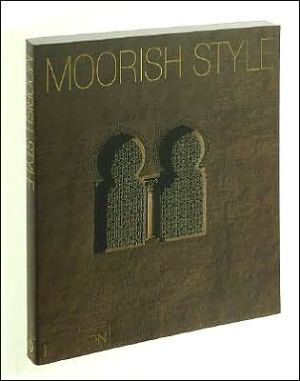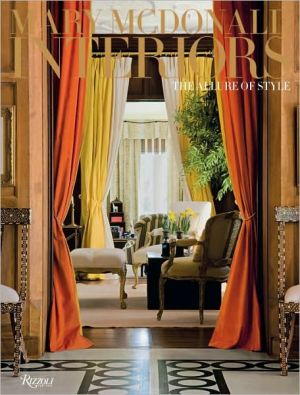Moorish Style
In the nineteenth century a fascination with the Orient spread across Europe. The landscapes, townscapes and costumes of the Ottoman, Arab and Mogul worlds provided inspiration for painters from Delacroix to Matisse. When expressed in architecture and design, this phenomenon became known as the Moorish Style. In this magnificently illustrated survey, Miles Danby examines the roots of the style in art and architecture throughout the Islamic world, discussing the factors of space, pattern,...
Search in google:
In the nineteenth century a fascination with the Orient spread across Europe. The landscapes, townscapes and costumes of the Ottoman, Arab and Mogul worlds provided inspiration for painters from Delacroix to Matisse. When expressed in architecture and design, this phenomenon became known as the Moorish Style. In this magnificently illustrated survey, Miles Danby examines the roots of the style in art and architecture throughout the Islamic world, discussing the factors of space, pattern, structure and decoration. Of all the buildings that exemplify this style, the Alhambra in Granada is perhaps the most important. Expertly recorded by the great nineteenth-century designer Owen Jones, its features became part of the exotic dreams of aesthetes and have continued to inspire architects in the twentieth century. This book, now available in paperback, is the first to examine the style from its origins to its contemporary manifestation.Library JournalThis is a study of the development of the "Moorish" style in architecture and crafts as it developed in North Africa and Spain, as well as the style's influence on the architecture of Europe, the Americas, and contemporary Islamic lands. Danby (professor emeritus in architecture, Newcastle Univ.) is at his best in explaining the appeal of the Moorish on Western European culture, with intriguing examples ranging from Romantic paintings to 20th-century movie theaters. The somewhat academically wordy text is profusely illustrated with excellent color photographs of buildings and museum objects. Unfortunately, any value of the text is almost totally undermined by the book's design: the body text is typeset in a thin, condensed, san serif font set in narrow columns and printed with a light gray ink, which renders the writing almost unreadable. Recommended for specialized collections for its coverage of the influence of the Moorish on later architectural styles, and its spectacular color illustrations.-Eugene C. Burt, Art Inst. of Seattle Lib.
Ch. 1Introduction6Ch. 2Roots and Derivation of Style20Ch. 3Space Elements54Ch. 4Pattern-Making84Ch. 5Crafts and Materials112Ch. 6Zenith of the Style in the Nineteenth Century148Ch. 7Developments and Variations in the Twentieth Century200
\ Library JournalThis is a study of the development of the "Moorish" style in architecture and crafts as it developed in North Africa and Spain, as well as the style's influence on the architecture of Europe, the Americas, and contemporary Islamic lands. Danby (professor emeritus in architecture, Newcastle Univ.) is at his best in explaining the appeal of the Moorish on Western European culture, with intriguing examples ranging from Romantic paintings to 20th-century movie theaters. The somewhat academically wordy text is profusely illustrated with excellent color photographs of buildings and museum objects. Unfortunately, any value of the text is almost totally undermined by the book's design: the body text is typeset in a thin, condensed, san serif font set in narrow columns and printed with a light gray ink, which renders the writing almost unreadable. Recommended for specialized collections for its coverage of the influence of the Moorish on later architectural styles, and its spectacular color illustrations.-Eugene C. Burt, Art Inst. of Seattle Lib.\ \








